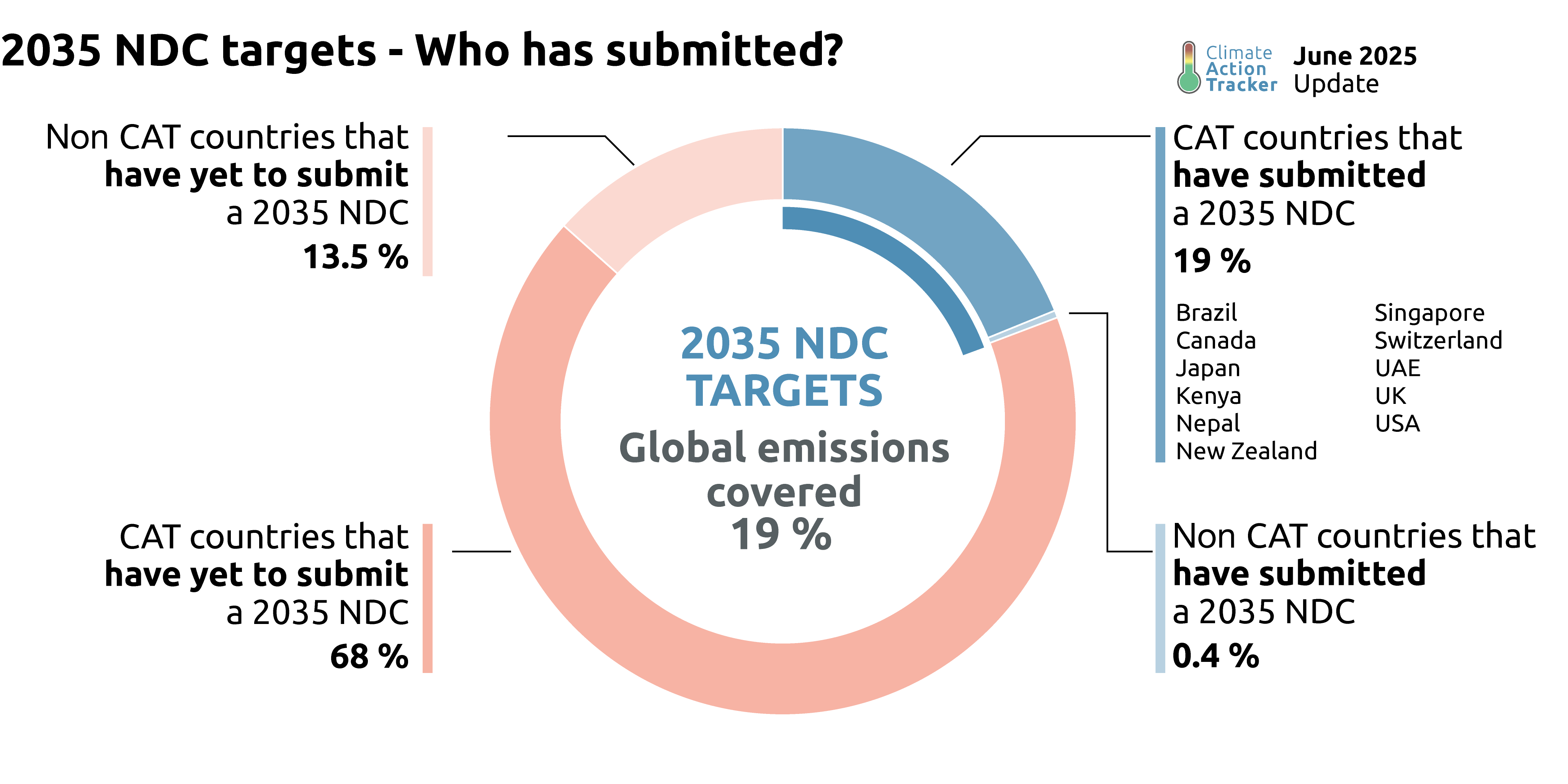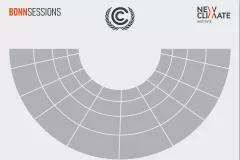Halfway through 2025 and, despite an early deadline this year, only 11 of the 40 countries the Climate Action Tracker (CAT), which NewClimate Institute is part of, assesses have submitted a 2035 climate target (NDC). Of them, just one has put forward a domestic target that is 1.5˚C compatible if followed by increased international finance.
CAT countries account for around 85% of global emissions. Including 11 additional submissions made by non-CAT countries, 22 countries had submitted new targets by 19 June 2025, representing 19% of global emissions in 2022. The remaining CAT countries yet to submit their NDCs account for approximately 68% of global emissions.
 To keep the 1.5°C goal within reach, governments must strengthen their 2030 targets to help close the 19–23 GtCO2e gap and halve global emissions by the end of the decade. They must also put forward robust 2035 targets that put the world on track to reach net zero greenhouse gas emissions in the second half of the century.
To keep the 1.5°C goal within reach, governments must strengthen their 2030 targets to help close the 19–23 GtCO2e gap and halve global emissions by the end of the decade. They must also put forward robust 2035 targets that put the world on track to reach net zero greenhouse gas emissions in the second half of the century.
The 2035 NDCs submitted so far show a limited increase in ambition:
None of the countries we track have strengthened their 2030 targets in this latest round of submissions: an absolute necessity given the need to halve emissions by 2030 to keep the world on a pathway to avoiding dangerous climate change. A failure to substantially strengthen current 2030 targets and action would mean risking the ability to limit global warming to 1.5°C, likely leading to a multi-decadal, high overshoot of this limit, even if followed by strong 2035 targets.
There is still time to close the gap ahead of COP30 in Belém. While they have missed the February deadline, governments can - and must - do the following to increase the ambition of their climate action:
- Put forward stronger 2030 targets that close the 19–23 GtCO2e gap and halve global emissions by the end of the decade compared to 2019 levels.
- Present 2035 targets that align global emissions with a 1.5°C compatible trajectory.
- Transparently communicate climate finance contributions and needs.
- Clearly separate carbon sinks and other removals from emissions reduction efforts in other sectors, to ensure transparent targets and prevent creative accounting.
- Only use Article 6 to increase ambition, meaning it should represent additional emissions reductions, beyond 1.5°C aligned domestic action.
The opportunity to course-correct is still within reach. Renewable energy is growing exponentially, as is the uptake of EVs. Investments in clean energy are now double those for fossil fuels, particularly oil and gas, for the first time, while investment in clean manufacturing capacity is growing rapidly.
NDC series: In-depth country analyses
To support governments in raising ambition ahead of COP30, the CAT has produced seven country-focused reports: six on major emitters that have not yet submitted updated NDCs (China, India, the European Union, Indonesia, South Africa, and Australia) and one on the COP30 host country, Brazil. Together, these 7 countries accounted for around 50% of global GHG emissions (including LULUCF) in 2022.
These reports aim to provide a clear picture of how each country can strengthen its climate action in upcoming NDCs, in line with limiting warming to 1.5°C. Although Brazil submitted its 2035 NDC last November, it falls short of a 1.5°C pathway and lacks clarity on the role of LULUCF. As COP30 host, Brazil has a unique opportunity to lead by example. We included it in our series to urge a more ambitious and transparent NDC: one with stronger 2030 and 2035 targets that truly aligns with a 1.5°C pathway, separate LULUCF goals, and a clear long-term strategy for achieving climate neutrality by 2050.








